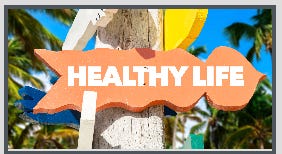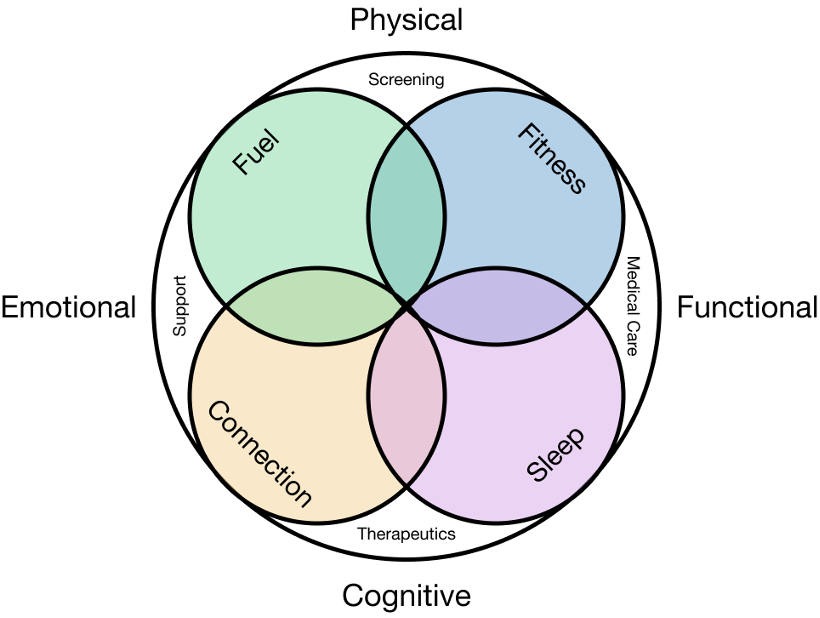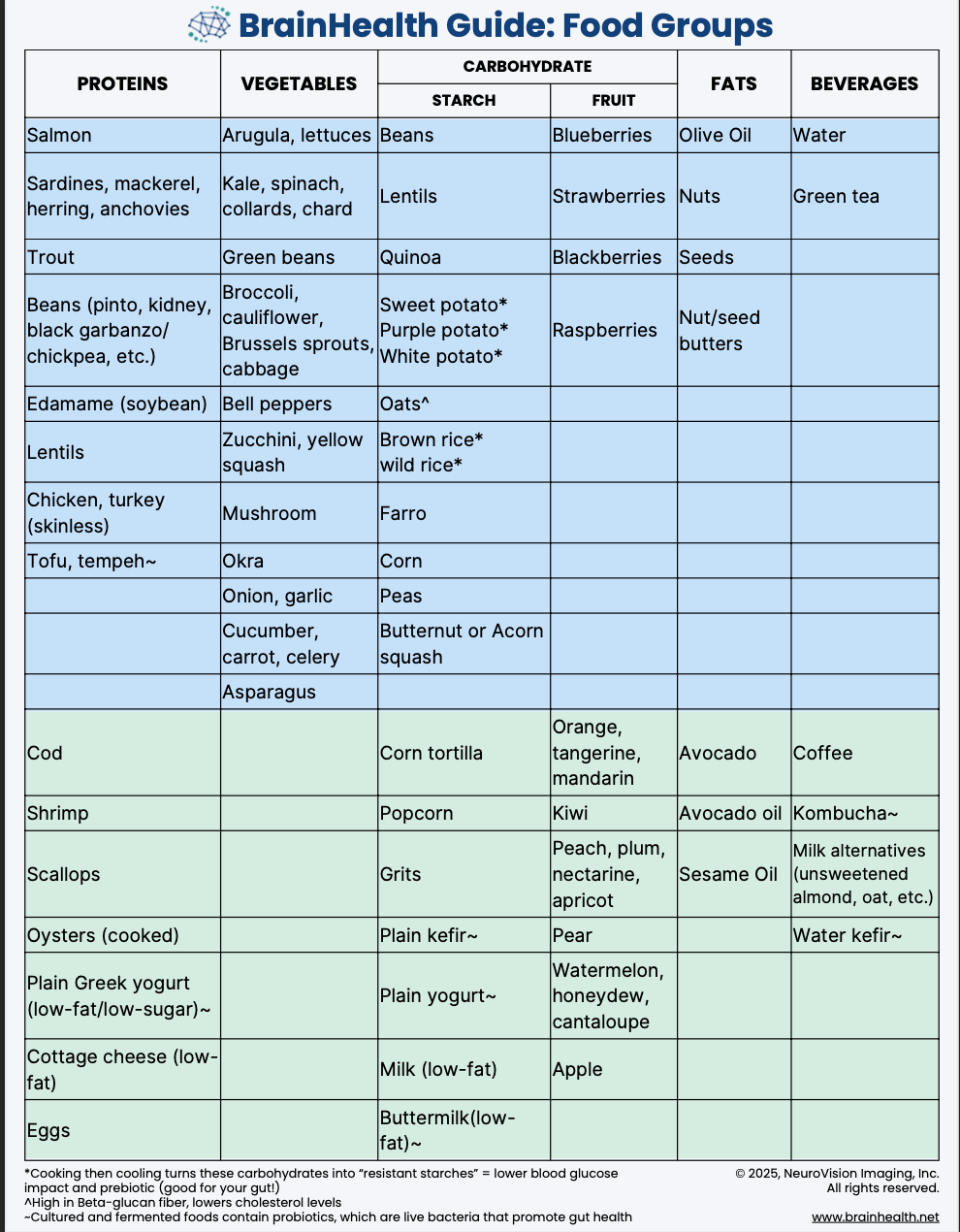What Does it Mean to Be Healthy, Anyway?
Takeaways from the Insight into Health Speaker Series
“Yeah, yeah”, we all know the basics: eat your vegetables, move your body, get more sleep. But lifelong health isn’t just what you do; it’s understanding the why and how to make it realistic, enjoyable, and sustainable. Registered Dietitian Allison McKeany, MS, RD, reframes wellness with a focus on healthspan — maximizing physical, cognitive, and mental well-being at every age, so you live healthier because you want to, not because you “should”.
The toughest part of launching a new speaking series about health is winning people over — helping them see that this isn’t just another lecture full of the same old nutrition advice.
Which is why, when I approached Sonoma Valley’s Vintage House earlier this year, I wasn’t sure how it would be received. I assured the organizers that I was prepared for a tough sell and a small group and that I was up for the challenge! Needless to say, I was pleasantly surprised to see a nearly full room when I walked in for the first class a few weeks ago.
I know from experience, however, that getting people to come back is the true test. The second and third classes of the three-part series were nearly as full. A good sign. Time to start thinking about the next series.
To the new readers who attended the speaker series, thank you! This summary post is for you. Please feel free to share. Word of mouth is the best way to pack another room!
October 13: What Does it Mean to Be Healthy, Anyway?1
Health is more than a number — it is a personal definition that involves what is important to you now and in the future.
Start thinking about your personal definition of health by considering two questions:
What activities are important for you to remain functionally independent? Getting up off the floor unassisted?
Putting on socks and shoes without help?
Remembering to take medications?
Climbing a flight of stairs?
___________________?
What activities are on your longevity wish list? These are things you want to be able to do now and in the future for pleasure and adventure.
Travel without accommodations?
Swim a mile? (that’s mine, folks)
Play at the park with grandchildren?
Dance at a social event?
___________________?
Achieving and maintaining your health goals requires addressing2…
Physical Health: Screening for, preventing, and/or managing chronic disease (heart disease, diabetes, cancer, etc.).
Functional Health: Focusing on your body’s ability to function in the way that you want it to, so you remain independent and avoid falls and injury.
Cognitive Health: Thinking clearly, remembering, problem-solving, and learning new things.
Emotional Health: Experiencing and expressing a range of emotions in healthy and productive ways.
Each of these contributors to health interacts with the others, meaning that making a change to one is likely to affect the others.
Addressing your health goals starts with small things that you can do every day:
Fuel: Feeding and hydrating yourself
Fitness: Moving your body
Sleep: Prioritizing and valuing sleep
Connect: Finding belonging and an uplifting community
Just as different types of health interact and affect one another, so too do fuel, fitness, sleep, and connection:
Some of you astute readers may be wondering, “What about the other words on this graphic: Screening? Medical care? Therapeutics (medications & supplements)? Support?” These, too, are important in optimizing health. But, it’s when these factors are combined with fuel, fitness, sleep, & connection that things start to get exciting.
What areas of health are important to you? One small step can get you started on the path to fulfilling your goals.
October 27: Beyond the Basics
Fuel:
Use food to work for you instead of against you. This is where the name of this publication, “Put Your Food to Work,” comes from.
Carbohydrates: Provide energy for your muscles and brain
Protein: Supports muscle, immune system, and satiety
Fat: Increases nutrient absorption, “healthy” fats promote heart and brain health, and satiety
Combining protein + healthy fat + fiber-rich carbohydrates at each meal is often the key to providing nourishing energy that is delicious and sustaining.3
Fitness:
Different types of fitness activities contribute to physical function4:
Cardiovascular activities such as swimming, walking, jogging, biking, hiking, dancing, and more! They increase heart and breathing rates, supporting heart health and lung capacity.
Strength training includes exercises such as body-weight exercises, resistance bands, hand weights, machine weights, Pilates, certain types of yoga, and more! They progressively challenge muscles, enhancing muscle mass and bone density.
Balance practices such as yoga, tai chi, single-leg standing, walking backwards, and more! They require coordinating your body in space, reducing your risk of falling.
Flexibility exercises, including yoga, Pilates, dynamic stretches, static stretches, and more! They promote muscle relaxation and lengthening, decreasing injury risk and pain.
Incorportaing each type of exercise throughout your day and week has been shown to be important for all categories of health.
Remember, it doesn’t have to feel like exercise. Make it fun and try new things. And even better? Make it a time of connection.
Sleep:
Prioritizing sleep is often the missing link to improving health.5
Most adults need 7.5-9 hours of sleep/night, which doesn’t seem to change with age, though sleep may become more difficult with age.
Both sleep duration and sleep quality are important for metabolism, risk of disease and injury, cognitive function, and emotional health.
Sleep involves both melatonin production and “sleep pressure”:
Melatonin is important for the initiation of sleep (falling asleep), not the duration (staying asleep).
Internal melatonin production is light-dependent. It increases as light levels decrease, peaks in total darkness, and slowly decreases as light levels increase.
Many sleep difficulties are tied to disruptions to melatonin production because of artificial light exposure at night and inadequate sunlight exposure during the day.
“Sleep pressure” refers to the accumulation of adenosine in the brain.
The more adenosine that builds up, the more tired you feel. Adequate sleep helps clear adenosine and contributes to the feeling of being refreshed when you wake up.
Caffeine blocks adenosine receptors, so you don’t feel the fatiguing effects of the buildup of adenosine. Caffeine does not give you energy. It just tricks your body into feeling less tired.
Setting up your sleep routine and environment is the first step to optimizing sleep.
Connection:
Positive relationship with self and others.
Self:
All too often, the thoughts that go through our heads are full of rumination about the past and worry about the future. While being hypervigilant used to be an important survival mechanism, you can pull your thoughts to the present by:
Narrowing in on what you can hear (Car engine? Bird? Washing machine?)
Feeling the sensations in your body (your feet on the ground, your seat in a chair, the silkiness of the water)
Naming what you see (tree, coffee cup, book).
Others:
We need each other for our safety and survival. Connection and belonging are both key components of emotional health. Support your emotional health by:
Setting regular calls, walks, or coffee dates
Signing up for a class, book club, exercise class, or local organization
Volunteering
Saying “yes!” to new experiences
November 3: It’s All About the Brain
Cognitive health refers to the ability to think clearly, remember, problem-solve, and learn new things.
The risk of developing cognitive decline, including Alzheimer’s Disease (AD), is due to both non-modifiable and modifiable risk factors.
Non-modifiable factors are things that you can’t change, including age, gender, and genetics.
The risk of AD goes up with age (as do most chronic diseases)
The risk of AD is higher for women, accounting for about 2/3 of diagnoses (likely due to longer lifespan, hormone changes, and genetics).
The APOE gene is the most well-studied gene linked to Alzheimer’s disease. There are three types of this gene — APOE-2, APOE-3, and APOE-4 — and since everyone inherits one copy from each parent, there are six possible combinations: 2/2, 2/3, 3/3, 3/4, 4/4, and 2/4.
The APOE-3 type is most common and suggests average risk for AD
APOE-2 may decrease the risk of AD
APOE-4 increases risk — especially if a person has two copies
Having one or two high-risk copies of the APOE gene does not mean AD is inevitable because risk for this disease is also related to several modifiable factors.
Modifiable risk factors account for nearly 50% of one’s risk of developing AD:
Elevated LDL-cholesterol, high blood pressure, & associated heart disease risk
Elevated blood sugar levels, pre-diabetes, & diabetes
Midlife obesity
Untreated sleep apnea
Physical inactivity
Smoking
Excessive alcohol consumption
Depression
Untreated hearing loss
Social isolation
Nutrient deficiencies6 (Vitamin B12, Folate, Vitamin B6, Vitamin D, Omega-3 DHA, magnesium, zinc, selenium)
What can you do? Start with the “Insight into Health” approach:
Fuel: MIND foods (see footnote 3)
Fitness: Participate in regular cardiovascular, strength, & balance training
Sleep: Prioritize sleep quantity & quality
Connect: Prevent isolation and loneliness with positive interactions
It is never too late, or too early, to build a life that supports lifelong cognitive health.
Whew! That was a lot of content, so congratulations if you’ve made it this far. Future published pieces will be much more bite-sized (pun intended). Please don’t let this one scare you away.
I’d love to know your thoughts and questions, as well as any requests for future articles.
Please support my work by sharing this post, tuning into my radio show, Insight into Health, on 91.3 KSVY, and subscribing to the show notes at insightintohealth.substack.com.
You can reach out to me directly at allison.mckeanyrd@gmail.com if you are interested in working with me as a patient or having me speak to your group.
Thank you for being here,
~Allison
Please note this information is for educational purposes only. Please consult with your medical provider to individualize based on your unique and changing needs.
Much of my approach with the Insight into Health framework is inspired by the work of Dr. Peter Attia. I highly recommend his book, Outlive.
BrainHealth Guide: Food Groups is used with permission, learn more by visiting www.brainhealth.net. The foods in the blue section represent research-based brain-healthy MIND dietary approach foods, while the foods in the green section are also nutrient-dense. As promised to my Vintage House class, you can learn more about best practices for cooling cooked foods here.
If you aren’t sure where to start with your fitness, check out these approachable at-home videos for inspiration, and then the sky’s the limit!
I stay up to date on the science of sleep in large part due to the amazing work by Dr. Matt Walker, who also has an excellent book.
Please keep in mind that this list of nutrients does NOT mean that I recommend that you supplement! It is important to evaluate your current nutrient status with your healthcare provider, who can help guide supplement needs, dosing, frequency, & duration.




